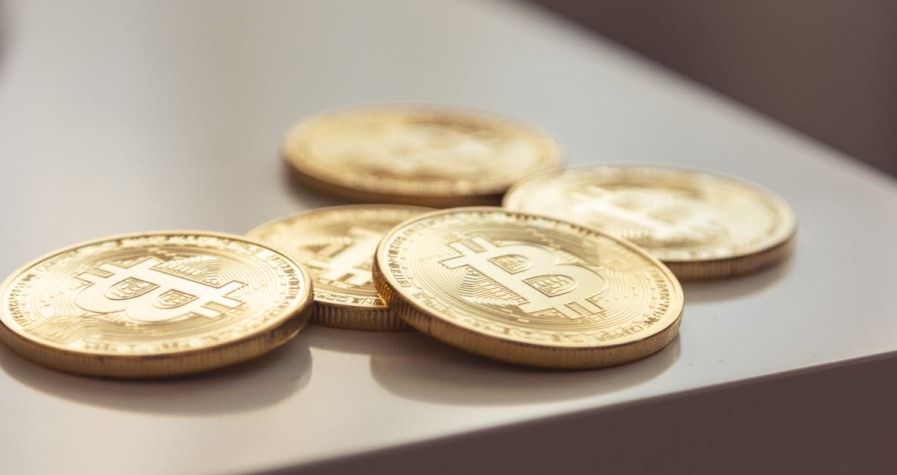Key Takeaways
- Blockchain oracles serve as essential data bridges that connect smart contracts to external information sources like stock prices, weather data, and IoT sensors, enabling blockchain applications to interact with real-world events and conditions.
- Multiple oracle types cater to different needs, including inbound oracles (bringing external data onto blockchain), outbound oracles (sending blockchain data to external systems), and decentralised networks like Chainlink that aggregate data from multiple sources for enhanced reliability.
- Oracles enable powerful real-world applications across industries, particularly in DeFi for price feeds and liquidations, supply chain management for tracking and compliance, and parametric insurance for automated payouts based on measurable events.
- The Oracle Problem highlights critical security challenges, including centralisation risks, data manipulation threats, and single points of failure that can compromise the trustless nature of blockchain systems and lead to financial losses.
- Leading oracle networks like Chainlink, Band Protocol, and Pyth Network offer different strengths, with Chainlink providing broad ecosystem support, Band Protocol offering cost-efficient cross-chain services, and Pyth Network specialising in high-frequency financial data.
- Oracle implementation requires balancing benefits with risks, as whilst they expand smart contract functionality and enable automation, they introduce trust dependencies and potential security vulnerabilities that must be carefully managed through proper verification mechanisms.
Blockchain technology operates in a closed environment where smart contracts can’t directly access real-world data. This creates a significant limitation when you need your decentralised applications to interact with external information like stock prices, weather data, or sports results.
Blockchain oracles bridge this gap by acting as data feeds that connect blockchain networks to external sources. They’re essential middleware that enables smart contracts to trigger based on real-world events and information that exists outside the blockchain ecosystem.
Understanding oracles becomes crucial as you explore advanced blockchain applications. From decentralised finance (DeFi) protocols that need accurate price feeds to insurance smart contracts that require weather data, oracles power some of the most innovative blockchain solutions available today. Let’s explore how these data bridges work and why they’re fundamental to blockchain’s future.
What Are Oracles in Blockchain?
Blockchain oracles function as intermediary services that connect decentralised networks to external data sources and systems. These digital bridges enable smart contracts to access real-world information that exists outside the blockchain environment.
You encounter oracles whenever smart contracts require external data to execute properly. Traditional blockchains operate as closed systems that cannot directly communicate with APIs weather services payment systems or stock market feeds. Oracles solve this connectivity problem by fetching verifying and delivering external data to blockchain applications.
The fundamental architecture of blockchain oracles involves three core components:
- Data retrieval mechanisms that collect information from external sources like financial markets IoT sensors and web APIs
- Verification protocols that validate data accuracy and authenticity before transmission
- Delivery systems that format and transmit verified data to requesting smart contracts
Oracles operate through a request-response cycle where smart contracts submit data queries and receive formatted responses. This process typically occurs within seconds depending on the oracle’s configuration and the complexity of the data being retrieved.
The integration of oracles with blockchain networks creates hybrid smart contracts that combine on-chain logic with off-chain data. These enhanced contracts can respond to real-world events and conditions making them suitable for complex financial products insurance claims and supply chain management.
You benefit from oracle services across multiple blockchain ecosystems including Ethereum Binance Smart Chain Polygon and Avalanche. Each network supports various oracle solutions that cater to different data requirements and security specifications.
Modern oracle networks employ multiple data sources and aggregation methods to ensure reliability. This multi-source approach reduces the risk of single points of failure and provides more accurate data feeds for critical blockchain applications.
Types of Blockchain Oracles
Understanding oracle classifications helps you identify the right solution for your blockchain applications. Oracle types differ based on data flow direction, information source, and operational structure.
Inbound and Outbound Oracles
Inbound oracles deliver external data into blockchain networks, enabling smart contracts to access real-world information. You’ll encounter these oracles feeding weather data to insurance contracts or price information to DeFi protocols. These systems pull data from external APIs, databases, or sensors to trigger contract executions based on predetermined conditions.
Outbound oracles transmit data from smart contracts to external systems outside the blockchain. You can use these oracles to trigger payments in traditional banking systems or unlock IoT devices when specific contract conditions are met. Outbound oracles essentially extend blockchain functionality beyond the network’s boundaries, creating actionable outcomes in physical systems.
Software and Hardware Oracles
Software oracles extract data from digital sources including APIs, web servers, and cloud databases. You’ll find these oracles providing real-time financial prices, weather forecasts, and market data to smart contracts. Software oracles access information from online platforms instantly, making them ideal for applications requiring frequent data updates.
Hardware oracles gather information from physical sensors and IoT devices in the real world. You encounter these oracles when RFID scanners track supply chain movements or electronic sensors monitor environmental conditions. Hardware oracles convert physical measurements into digital data that smart contracts can process, bridging the gap between tangible events and blockchain applications.
Centralised and Decentralised Oracles
Centralised oracles operate through a single controlling entity that provides data feeds to blockchain networks. You face potential security risks with centralised oracles since they create single points of failure and dependency on one data source. These oracles offer simpler implementation but compromise the decentralised nature of blockchain systems.
Decentralised oracles utilise multiple independent nodes to verify and supply data, enhancing security and reliability. You benefit from improved trustworthiness as these systems reduce single points of failure through consensus mechanisms. Chainlink represents a prominent decentralised oracle network that aggregates data from multiple sources to ensure accuracy and prevent manipulation.
| Oracle Type | Data Source | Control Structure | Primary Use Cases |
|---|---|---|---|
| Inbound | External to blockchain | Varies | Price feeds, weather data, market information |
| Outbound | Blockchain to external | Varies | Payment triggers, IoT device control |
| Software | Digital APIs/databases | Centralised/decentralised | Financial data, web services |
| Hardware | Physical sensors/devices | Centralised/decentralised | Supply chain, environmental monitoring |
| Centralised | Single entity | Single controller | Simple applications, cost-effective solutions |
| Decentralised | Multiple nodes | Distributed network | High-security applications, DeFi protocols |
How Do Blockchain Oracles Work?
Blockchain oracles operate through a systematic five-step process that transforms external data into blockchain-compatible information. This mechanism enables smart contracts to execute based on real-world inputs whilst maintaining the security and integrity of the blockchain network.
The oracle workflow begins when smart contracts request external data from oracle services. Off-chain nodes then query external data sources including APIs, sensors, and databases to retrieve the required information. Oracles verify and authenticate this data using cryptographic methods to prevent tampering during transmission. The processed data gets formatted into blockchain-compatible form before being sent back on-chain. Smart contracts utilise this verified data to autonomously execute their predetermined conditions and functions.
The Oracle Problem
The Oracle Problem represents the fundamental challenge of maintaining decentralisation whilst introducing external data sources into blockchain networks. You encounter centralisation risks when oracles connect external information to trustless blockchain environments, potentially compromising the entire system’s security.
Oracle vulnerabilities manifest in several critical ways that affect smart contract execution. Incorrect or fraudulent data from oracles causes smart contracts to execute in unintended ways, leading to financial losses or operational failures. Single points of failure emerge when centralised oracles control data feeds, creating dependency risks for decentralised applications. Malicious actors can exploit oracle weaknesses to manipulate data inputs, triggering false contract executions.
Data integrity concerns compound the oracle problem across multiple dimensions. You face timing attacks where oracles provide outdated information during volatile market conditions. Censorship risks arise when oracle providers restrict or manipulate specific data feeds. Trust assumptions increase when blockchain applications rely on external entities to provide accurate information.
Data Verification Process
Data verification represents the cornerstone of reliable oracle operations, employing multiple layers of security to ensure information accuracy. Oracles implement comprehensive filtering mechanisms that validate data sources before transmission to blockchain networks.
Cryptographic authentication forms the primary defence against data tampering during oracle operations. Digital signatures verify data authenticity from source to destination, preventing unauthorised modifications. Hash functions create unique fingerprints for data packets, enabling smart contracts to detect any alterations. Merkle trees provide additional verification layers for complex data structures requiring multiple validation points.
Aggregation techniques enhance data reliability through multi-source validation processes. Oracles collect information from multiple independent sources to create consensus-based data feeds. Weighted averages eliminate outlier values that could skew final results. Threshold mechanisms require minimum numbers of data sources to confirm information before transmission.
Decentralised oracle networks utilise multiple independent nodes to reduce single points of failure. Node operators stake tokens as collateral, creating financial incentives for accurate data provision. Reputation systems track oracle performance over time, rewarding reliable providers whilst penalising inaccurate sources. Slashing mechanisms automatically penalise nodes that provide false information, maintaining network integrity through economic consequences.
Real-World Applications of Blockchain Oracles
Blockchain oracles transform theoretical smart contract capabilities into practical solutions across multiple industries. These data bridges enable you to harness real-world information within decentralised applications, creating powerful use cases that extend far beyond simple cryptocurrency transactions.
DeFi and Smart Contracts
Decentralised finance relies heavily on oracle technology to deliver accurate, real-time financial data that powers autonomous financial operations. You’ll find oracles supplying critical information such as asset prices, interest rates, and market volatility data to DeFi protocols, enabling smart contracts to execute complex financial transactions without human intervention.
Price oracles play a particularly vital role in determining collateral values for lending protocols, automatically triggering liquidations when loan-to-value ratios exceed predetermined thresholds. Your DeFi interactions depend on these oracle feeds for stablecoin pegging mechanisms, cross-chain bridges that facilitate asset transfers between different blockchains, and liquidity pools that maintain optimal trading conditions.
The integration of oracle data allows you to participate in sophisticated financial products including automated yield farming strategies, dynamic interest rate adjustments, and algorithmic trading systems that respond instantly to market conditions. These applications demonstrate how oracles eliminate the need for traditional financial intermediaries whilst maintaining transparency and trustless execution.
Supply Chain Management
Oracle technology revolutionises supply chain transparency by connecting physical sensors and logistics data to blockchain networks. You can track products throughout their entire journey from manufacturing to delivery, with oracles feeding verified information about location coordinates, temperature readings, humidity levels, and quality metrics into immutable blockchain records.
This integration enables you to verify product authenticity, monitor compliance with storage requirements, and automatically trigger contract payments when shipment conditions are met. For example, pharmaceutical companies use oracle-powered systems to ensure temperature-sensitive medications maintain proper storage conditions, with smart contracts automatically flagging violations and adjusting delivery routes accordingly.
Supply chain oracles also facilitate automated compliance reporting, enabling you to demonstrate adherence to regulatory standards through tamper-proof data records. The technology supports real-time inventory management, predictive maintenance scheduling, and quality assurance protocols that respond immediately to environmental changes or operational anomalies.
Insurance and Parametric Products
Parametric insurance represents one of the most innovative applications of blockchain oracles, enabling you to receive automatic payouts based on objective, measurable events rather than traditional claims processing. Weather oracles feed meteorological data directly into smart contracts, triggering instant compensation when rainfall, temperature, or wind speed measurements exceed predetermined thresholds.
Flight delay insurance exemplifies this automation, with oracles monitoring aviation databases to detect delays and initiate immediate payouts without requiring manual claim submissions. You benefit from reduced processing times, eliminated paperwork, and guaranteed payouts based on verifiable data sources rather than subjective assessments.
Oracle-powered insurance extends to crop protection, natural disaster coverage, and equipment failure protection, with smart contracts automatically calculating compensation amounts based on real-time sensor data and market conditions. This approach eliminates fraudulent claims, reduces administrative costs, and provides you with faster, more reliable insurance settlements backed by transparent, tamper-proof data verification.
Popular Oracle Networks and Platforms
Several oracle networks have emerged as industry leaders, each offering unique features and capabilities for connecting blockchain systems with external data sources. These platforms vary in their technical architecture, data aggregation methods, and target applications.
Chainlink
Chainlink operates as the most widely adopted decentralised oracle network, processing data through multiple independent nodes to ensure tamper-resistance and security. You’ll find Chainlink’s architecture aggregates information from numerous data providers, creating consensus mechanisms that verify data accuracy before transmitting it to smart contracts.
The network’s reputation system incentivises honest data provision through LINK token staking, where oracle operators risk financial penalties for providing incorrect information. Chainlink’s extensive ecosystem supports over 1,000 decentralised applications across 12 blockchain networks, making it the dominant choice for DeFi protocols requiring reliable price feeds.
Your smart contracts can access Chainlink’s data feeds through standardised interfaces, receiving verified information about cryptocurrency prices, weather conditions, sports results, and traditional market data. The network’s modular design allows you to customise oracle configurations based on specific application requirements, whether you’re building lending protocols or prediction markets.
Band Protocol
Band Protocol delivers cross-chain oracle services through BandChain, an independent blockchain built on Cosmos-SDK that processes data requests with enhanced speed and cost-efficiency. You benefit from Band’s architecture that separates oracle computations from the main blockchain, reducing transaction costs by up to 90% compared to Ethereum-based alternatives.
The protocol’s validator network secures data integrity through a proof-of-stake consensus mechanism, where validators stake BAND tokens to participate in data aggregation. Band’s cross-chain compatibility enables you to access consistent data feeds across multiple blockchain ecosystems without maintaining separate oracle integrations for each network.
Band’s data sources include traditional APIs, web scraping services, and custom data connectors that you can configure for specific use cases. The platform excels in applications requiring frequent data updates, such as gaming platforms and high-frequency trading protocols, where transaction speed and cost efficiency are paramount.
Pyth Network
Pyth Network specialises in high-frequency financial market data, partnering directly with traditional trading firms and market makers to provide institutional-grade price feeds. You receive sub-second price updates from over 80 data publishers, including major exchanges like Interactive Brokers and Jump Trading.
The network’s unique publisher model eliminates intermediary data aggregation, allowing market makers to contribute their proprietary trading data directly to blockchain applications. Pyth’s price confidence intervals provide you with uncertainty measurements alongside each price feed, enabling more sophisticated risk management in your DeFi protocols.
Your applications can access Pyth’s data across multiple blockchain networks, including Solana, Ethereum, and Avalanche, with price feeds covering equities, commodities, foreign exchange, and cryptocurrency markets. The network’s focus on financial data quality makes it particularly valuable for derivatives trading platforms and automated market makers requiring precise pricing information.
Benefits and Limitations of Blockchain Oracles
Blockchain oracles provide essential connectivity between smart contracts and external data sources, expanding their capabilities whilst introducing specific security considerations. Understanding these benefits and limitations helps you make informed decisions about oracle implementation in your blockchain projects.
Advantages for Smart Contracts
Oracles expand smart contract functionality by enabling access to real-world data that’s otherwise unavailable on blockchain networks. You can implement complex decentralised applications across industries like DeFi, insurance automation, supply chain management, and asset tokenisation using oracle-powered smart contracts.
Enhanced Automation drives operational efficiency through oracles that execute contracts automatically without manual intervention. Your smart contracts operate continuously once configured, performing repetitive or one-off actions based on external triggers whilst saving time and reducing human error.
Trustless Transactions become possible when oracles provide reliable external data to confirm contract conditions before execution. You can create sophisticated financial products and trading mechanisms that respond to market conditions without traditional intermediaries.
Interoperability increases through oracles linking multiple blockchains and external data sources. Your applications gain access to broader ecosystem functionality, enabling cross-chain transactions and multi-platform integrations that weren’t previously possible.
Dynamic Application Development allows you to build more complex dApps that depend on accurate external feeds. Market-responsive lending protocols, weather-based insurance products, and supply chain tracking systems become feasible through oracle integration.
Security Risks and Challenges
Data Manipulation represents the primary security concern when compromised oracles feed false information to smart contracts. Your applications face risks of incorrect contract execution or financial losses if malicious actors successfully tamper with oracle data feeds.
Trust Dependencies conflict with blockchain’s trustless nature by introducing reliance on third-party data providers. You must evaluate oracle operators carefully since their reliability directly impacts your smart contract security and decentralisation goals.
Single Points of Failure emerge when centralised oracles become attack vectors threatening entire protocols. Your DeFi applications or trading systems can face systematic risks if dependent on oracles that lack redundancy or proper security measures.
Privacy Concerns arise when oracle operators access sensitive data exchanged between off-chain sources and blockchain networks. Your confidential information may become vulnerable during the data transmission and processing phases.
Data Accuracy Issues can cause unfavourable smart contract decisions through errors or malicious inputs. Your applications require secure and reliable data sources with proper verification mechanisms to prevent costly mistakes or exploitation attempts.
Technical Solutions like confidential computing and Trusted Execution Environments (TEEs) address these challenges by protecting data and code in isolated, encrypted hardware spaces. These advances reduce risks of data tampering and unauthorised observation during oracle processing operations.
Conclusion
Blockchain oracles represent a fundamental breakthrough in connecting isolated blockchain networks with the dynamic real world around us. They’re the essential bridge that transforms smart contracts from simple automated programs into sophisticated applications capable of responding to live market data weather conditions and countless other external factors.
As blockchain technology continues evolving you’ll find oracles becoming increasingly sophisticated and secure. The ongoing development of decentralised oracle networks cryptographic verification methods and cross-chain compatibility solutions addresses many current limitations whilst opening new possibilities for innovation.
Whether you’re building DeFi protocols managing supply chains or developing parametric insurance products understanding oracles is crucial for your blockchain journey. They’re not just technical tools—they’re the gateway to creating truly impactful decentralised applications that can revolutionise how we interact with digital systems and real-world data.
Frequently Asked Questions
What are blockchain oracles?
Blockchain oracles are essential middleware services that act as bridges between blockchain networks and external data sources. They enable smart contracts to access real-world information, overcoming blockchain’s inherent limitation of being unable to directly retrieve data from outside their network. Oracles facilitate the creation of hybrid smart contracts that combine on-chain logic with off-chain data.
Why do blockchains need oracles?
Blockchains are isolated networks that cannot directly access external data, which limits the functionality of decentralised applications. Oracles solve this connectivity problem by providing verified external information to smart contracts, enabling them to respond to real-world events and execute complex operations based on accurate, up-to-date data from various sources.
How do blockchain oracles work?
Oracles operate through a systematic five-step process: data request, retrieval, verification, processing, and delivery. They collect information from external sources, verify its accuracy using cryptographic methods, and transform it into blockchain-compatible format. This allows smart contracts to execute based on real-world inputs while maintaining network security and integrity.
What is the Oracle Problem?
The Oracle Problem refers to the challenge of maintaining decentralisation when integrating external data sources into blockchain networks. It creates potential vulnerabilities including incorrect data feeds, single points of failure, and manipulation by malicious actors. This problem threatens the trustless nature of blockchain systems when relying on external information sources.
What are the different types of blockchain oracles?
Oracles are categorised by data flow direction (inbound/outbound), information source (software/hardware), and operational structure (centralised/decentralised). Inbound oracles bring external data to blockchains, whilst outbound oracles send blockchain data externally. Software oracles handle digital information, hardware oracles use physical sensors, and decentralised oracles offer enhanced security through multiple nodes.
What are the main applications of blockchain oracles?
Oracles enable practical blockchain applications across various industries. In DeFi, they provide real-time financial data for autonomous transactions. Supply chain management uses oracles to track products and ensure compliance. Parametric insurance utilises oracles for automatic payouts based on measurable events, streamlining claims processing and reducing administrative costs.
Which are the most popular oracle networks?
Leading oracle platforms include Chainlink, the most widely adopted decentralised oracle network supporting over 1,000 applications with tamper-resistant architecture. Band Protocol offers cross-chain services and cost efficiency, whilst Pyth Network specialises in high-frequency financial market data, providing institutional-grade price feeds directly from trading firms for enhanced reliability.
What are the benefits of using blockchain oracles?
Blockchain oracles enhance automation by enabling smart contracts to execute based on real-world data. They facilitate trustless transactions without intermediaries, improve interoperability between blockchain and external systems, and support dynamic application development. These benefits allow for creating complex decentralised applications across various industries with enhanced functionality.
What are the limitations and risks of blockchain oracles?
Oracle limitations include security risks such as data manipulation, trust dependencies on external sources, potential single points of failure, privacy concerns, and data accuracy issues. These challenges can compromise the trustless nature of blockchain systems. Technical solutions like confidential computing and Trusted Execution Environments help mitigate these risks.
How do oracles ensure data accuracy and security?
Oracles implement comprehensive verification mechanisms including cryptographic methods, digital signatures, hash functions, and Merkle trees to prevent data tampering. Decentralised oracle networks use multiple independent nodes, reputation systems, and slashing mechanisms to maintain integrity. Aggregation techniques from multiple sources enhance reliability and reduce manipulation risks.









